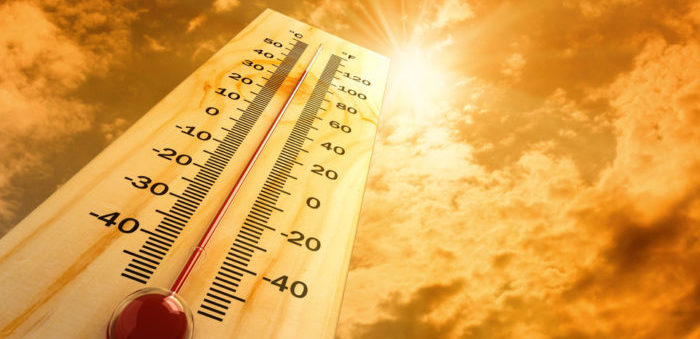The American Club recently experienced an increase in illness claims regarding heat exposure. In order to supply a loss prevention response to this trend, the Club collaborated with Wise Health Inc. Seafarer Outreach to produce guidance to improve seafarers’ awareness of measures to avoid such illnesses. The guidance describes heat-related illnesses, and discusses proactive measures to prevent them.
Working in hot temperatures, especially during summer months, is a fact of life at sea. When out on deck in hot climates or carrying out daily routines in the machinery or galley spaces, seafarers are exposed to high temperatures, particularly in summer months.
Overworking the body in hot conditions can lead to serious heat-related illness if precautionary measures are not taken.
[smlsubform prepend=”GET THE SAFETY4SEA IN YOUR INBOX!” showname=false emailtxt=”” emailholder=”Enter your email address” showsubmit=true submittxt=”Submit” jsthanks=false thankyou=”Thank you for subscribing to our mailing list”]
Heat-related illnesses can be avoided by identifying the risks and understanding the warning signs. Certain factors can increase the risk of a heat-related medical condition, including chronic illness, obesity, being over age 65, certain medications, alcohol or drug use.
Individuals living in hot and humid environments will be more adapted to the heat, while for others heat acclimatization takes weeks or longer in extreme heat. There are mainly three stages of a critical heat-related emergency: heat cramps, heat exhaustion and heat stroke. There are also a spectrum of other heat-related illnesses, some more hazardous than others:
- Sunburn: A moderate to severe sunburn can cause inflamed, painful, tender, and itchy skin. Some people may also experience blisters and swelling difficult to ignore. If possible, it is best to avoid working in the direct sun between the hours of 10am and 2pm, it is advisable to wear UV protection sunglasses and a wide brimmed hat that covers the head, neck and face and to wear clothing that will protect the skin. It’s important to use sun protecting factor (SPF) 30 or higher sunscreen to minimize sun damage, severe burns, and skin cancer on any exposed areas of the body, and reapply as directed;
- Heat cramps: Painful muscle cramps are a sign of fluid loss and electrolyte/salt deficiencies. Consistent hydration with water is essential, as well as salt replenishment; and stretching affected muscles are important. A good rule of hydration is to drink enough fluid so your urine is clear, and to take action if you’re feeling drained or depleted;
- Dehydration: Your skin is your largest organ and your body naturally cools itself through perspiration. It’s important to replenish fluids before you are thirsty, and to avoid the effects of dehydration. Too much time exposed to hot conditions will deplete the body of essential fluids and electrolytes to keep the body from cramping. Fluid and electrolyte losses cause chills, dizziness, clammy skin, and may create a salty frostiness on your skin. Table salt, potassium rich fruits, seeds, nuts, dairy products are all good sources of electolytes;
- Rapid fluid and electrolyte loss: Dehydration can occur rapidly. It’s important to take needed breaks in cooler areas. Air conditioning, as well as sitting in front of a fan will further draw moisture from your body, and give a sense of false cooling. High caffeine-content energy drinks and even coffee are diuretics that draw fluids away from the body and will require more fluids to replenish and replace. Wear protective, but not heavy clothing in hot climates to allow air flow and cooling;
- Heat exhaustion and heatstroke: With insufficient hydration and electrolyte replenishment, a progression of symptoms will continue, with headache, excessive thirst, nausea, vomiting, and mental confusion developing. Heat exhaustion is the precursor to heatstroke. Symptoms of heatstroke may accelerate quickly, with dry skin, slurred speech, confused thinking, and potentially seizures. In severe cases, heatstroke can cause the brain and other vital organs to swell, possibly resulting in permanent damage. Heatstroke occurs when the body’s core temperature exceeds 104F/40C (as determined by rectal thermometer). Do not ignore symptoms!
- Prevention and communication: Shipboard operations may require working in hot or extreme environments for extended time periods. Be aware of your shipmates and friends while working together in these conditions as they are also at risk. Communication between shipmates can help the entire crew work more safely in extreme conditions. Heatstroke is preventable with attention to both physical and mental symptoms, adequate hydration – enough to keep your urine clear – and taking sufficient and timely breaks when needed in an air conditioned environment;
- Medical attention: Seek immediate medical attention when necessary. Even younger, fit seafarers can be brought down by heatstroke that may occur with little warning and very quickly. It is essential to lower the core body temperature, replenish fluids and electrolytes, and follow medical advice closely. Recovery may require hospitalization and significant time, with the possibility of permanently altering your internal body thermometer. Long term vigilance may be needed.

































































